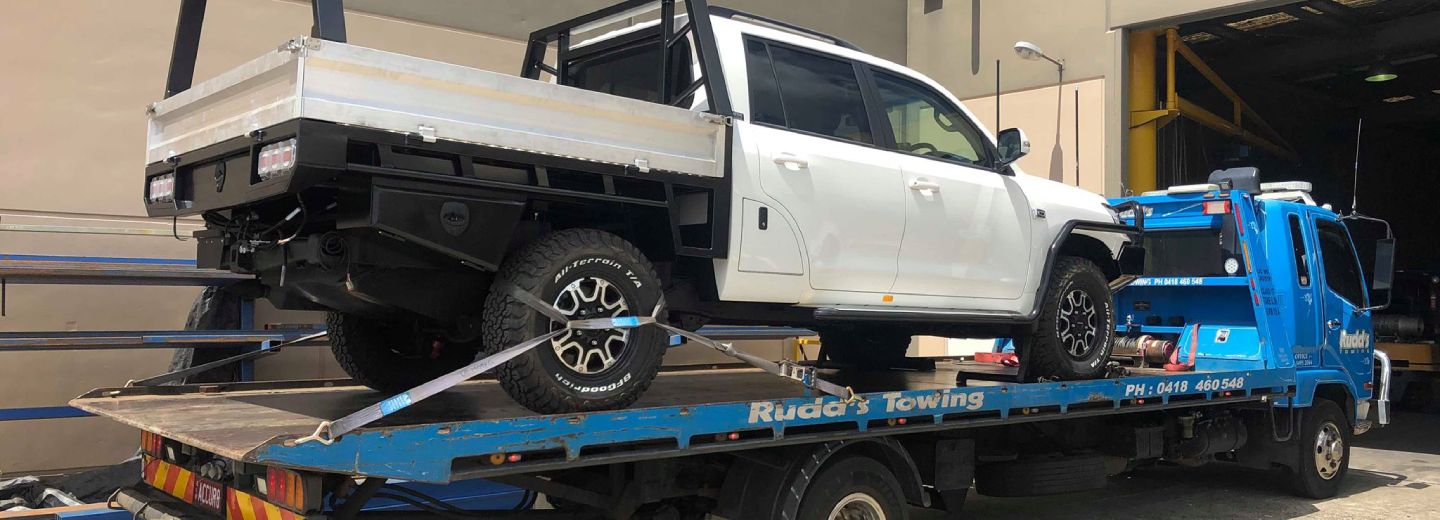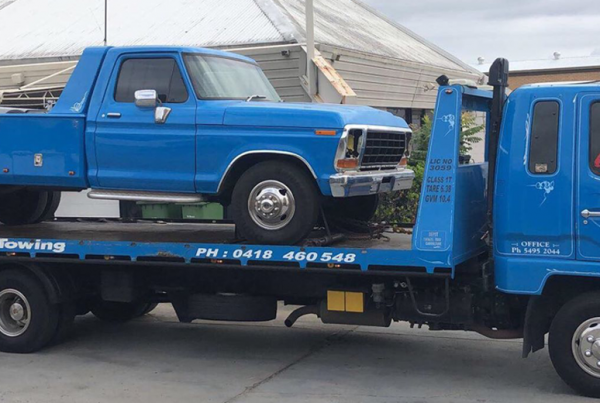When you’re putting your car on a tow truck for a longer distance, there are a few extra steps you can take to be prepared and have your vehicle ready to go. That way, you’ll know it’s as safe as possible to give you some added peace of mind.
In this guide, we’re going to run through each of those 10 steps that help our customers out on those longer towing jobs.
1. Choose the right tow truck operator
Easily the best step to give you peace of mind, the towing operator you choose is obviously at the center of the entire operation. When you’re working with a trustworthy brand like Rudd’s (not that we’re biased!), you’re getting a great truck, the right equipment, correct insurance and a driver that’s well trained for the task at hand.
Specifically with Rudd’s, your car is also being loaded onto a GPS-tracked truck so we have the location available at all times. Technology has come a long way and faith has no place in a tow job!
The best way to find a reputable operator? Take a look at their Google reviews over the last few months to see exactly what their customers have to say about their experience.
2. Clean your vehicle
This is such an important tip that you’ve probably never thought about before. A clean vehicle is about so much more than just appearance. When your car gets loaded onto the truck clean, it allows you to see the paint and panels more clearly.
This means both you and your driver can get a clearer picture of the condition your car is in. For you, that means you can easily spot new damage right away and be certain that it’s new.
While damage is incredibly rare in the loading and unloading phases, a long tow does introduce a mild risk of damage from rock chips and weather.
3. Document existing damage
Now that your car is shiny and clean, it’s time to take a record of the condition it’s in. This can be as simple as taking some photos with your phone or even a video walkaround. Make sure you give it a close look over and write down any damage you see as well.
With any damage well documented, any possible insurance claims will be that much easier as well. Again, the risk of damage with a quality operator is incredibly low, but it’s still better to be safe than sorry.
4. Remove personal belongings
You probably won’t be surprised to hear that people accidentally leave important belongings in the car so often when it’s been towed. We absolutely get it — most people don’t have need for a tow truck very often. When they do, it’s when they’re having a bad day and there’s a lot going on. That’s when that laptop gets left on the back seat or the booster seat is left in the car.
To save yourself from further stress and running around, go through the car thoroughly to look for anything that’s either valuable or necessary. The best time to do this is while your tow truck is en route.
5. Leave your alarm disabled
It might seem like a great idea to activate your alarm once it’s been loaded onto the truck. As your driver will remind you though, that’s not the best idea. The movement on the truck while en route will set your alarm off, meaning it’ll have to be disabled anyway.
Regardless, your car will be locked again once it’s unloaded at the other end, making sure it’s safe and secure.8. Take your house keys off the keyring
Another understandable mistake we see often is forgetting to take the important keys off your car’s keyring before giving it to the driver. This can be frustrating on a regular day, but when your car is being towed a long distance, it makes getting those keys back that much more difficult.
6. Communicate special requirements and info
If your vehicle has some interesting upgrades, accident damage or quirks, it’s a good idea to let your towing operator know when you book the job. That way, if special equipment is needed they can make sure it’s on board.
This also applies to anything unusual that might be needed for loading and unloading your car. A special alarm system, a very low ride height or even if there’s some damage or leaks that they need to be aware of. The more information your driver has, the safer the journey is for you, the driver and your car.
7. Service Your Vehicle Before Towing
Issues like low tyre pressure and fluid leaks can be mild annoyances while they’re sitting in your garage at home. On the back of a truck or in a storage facility though? They can develop into a far more frustrating outcome.
Even though your vehicle will be transported on the back of a truck, it’s always a good idea to give it a service before sending it off. This is even more important if you’re sending it your car somewhere remote where sourcing parts might be more of a challenge.
8. Consider Battery Health
If your car will be sitting in storage for a long period of time when it arrives, it’s a good idea to disconnect your battery beforehand. This may not be practical if it needs to be driven to and from the truck for transport, but if it’s just sitting in a yard it could save you having to buy a new battery.
If you’re having an EV transported a long distance, make sure you check the owners manual and get your car into the charge range they consider to be best for your battery. Particularly if it’ll be sitting in storage or a holding yard for a period of time on either end.
9. Secure Loose Items Inside the Vehicle
While you’ve mentioned removing personal belongings, it’s also important to secure any items that remain. Loose objects can shift during transit, potentially causing damage to the interior or becoming hazards upon unloading.
Don’t forget to check the boot for loose items or liquids that may not fare too well on the longer drive or while sitting in a holding yard.
10. Plan for Delays
The longer your car is on the back of a truck, the more likelihood there is for unavoidable delays like traffic and weather. While they’re still rare and we manage our long distance towing very effectively, don’t cut yourself short. If you need to use the vehicle on Saturday, don’t wait until Friday afternoon to give us a call!
If you are on a tight deadline–it happens sometimes–just give us a call. We’ll be able to give you an estimated ETA based on the info you provide.




